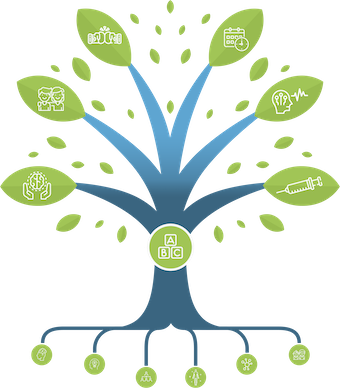New Daily Persistent Headache
What is New Daily Persistent Headache?
According to the International Classification of Headache Disorder (the reference book for headache diagnosis), a diagnosis of NDPH can be made if:
A. Persistent headache fulfilling criteria B and C
B. Distinct and clearly remembered onset, with pain becoming continuous and unremitting within 24 hours
C. Present for >3 months
D. Not better accounted for by another ICHD-3 diagnosis.
The key element is that the beginning of the headache must be clearly remembered. The typical story is «the headache started that day and never stopped ever since».
The headache may look like migraine or tension type and may be more or less severe, with fluctuations. The problem seen in headache clinic is that after years of chronic headache the beginning of the headache is not always clear to the patient, and when pressed by precise questions that may lead to a «clear diagnosis», patients might (subconsciously) build false memories of a sudden onset.
What is the cause of New Daily Persistent Headache?
Science cannot answer this question at this time. Hypotheses have been proposed, for example that the headache might be triggered by an infection, an inflammatory reaction etc. but these hypotheses have not been proven. It may also be that NDPH is a basket of many different chronic headaches that «started one day» and that it is why it is difficult to build a better understanding.
What type of investigation should I expect?
Headache experts will quite often propose MRIs of the brain, sometimes the spine. They might recommend a lumbar puncture and different blood tests. Quite often, all these tests will come back normal.
Due to the complexity of this problem and the lack of proof for a precise cause, some clinics and therapists will propose extensive workups that are not necessarily useful. Tests may be used to lead to a treatment that is sold as a potential cure to desperate people, even with no scientific proof of effectiveness.
What are the treatments for NDPH?
Since the cause of this headache, and even the exact definition, are not known, it is difficult to design treatments that are specific and study them. In consequence, physicians will usually use all the options available for migraine and tension-type headache to bring relief to patients.
It can be very difficult for the person suffering and for the health care providers to face a disabling situation with no proven treatment to offer.
Is there a chance that I will improve if I suffer from NDPH since a few years despite many treatment attempts?
This is a difficult question. NDPH is known to be difficult to treat, even in the hands of seasoned headache experts. Experience tells us that NDPH can go on for decades. Losing hope can be discouraging but keeping unrealistic expectations of a cure is not good either, as it may lead to chronic frustration, useless investigations and treatments.
Suffering from NDPH is not an easy situation. Each patient must determine how to deal with it best. Acceptance Commitment Therapy can help to deal with the emotional energy drains and improve quality of life. The focus should be on quality of life.
With time and different combinations of treatments the pain can be well-controlled.
REFERENCES
Yamani N, Olesen J. New daily persistent headache: a systematic review on an enigmatic disorder. J Headache Pain. 2019;20(1):80.
Post#404
Categories
THE MIGRAINE TREE
- BRANCHES
- ACUTE TREATMENTS
- DEVICES AND NEUROMULATIOIN
- PREVENTIVE TREATMENTS
- PROCEDURES AND INJECTIONS
- SELF-CARE AND LIFESTYLE
- SOCIAL LIFE
- TRUNK
- ROOTS
OTHER CATEGORIES




